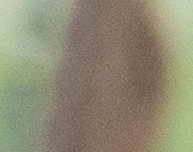Best Portrait Cameras Under $1,000: Shooting in low light
Seven cameras, eight lenses compared, one stood outPage 2: Turning the lights down!
By Dave Pardue, William Brawley and Dave Etchells
Posted: 06/15/2018
On the first page of this portrait shootout we showed you a well-lit outdoor scenario where each camera and lens could comfortably shoot wide open at base ISO with reasonable shutter speeds. In this section, we'll move into more difficult territory and turn down the available light!
The comparison below is meant to simulate either low outdoor lighting near dusk, or reasonable indoor lighting. We used a 6-stop neutral density filter across each camera + lens competitor, even on the RX100 V and the iPhone 8 Plus. And in order to balance the playing field, we normalized each to a 1/60s shutter speed, at their brightest aperture, and then allowed the ISO to rise to wherever it needed to be in order to obtain a good exposure.
Early evening and indoor lighting
This is where the stakes really heat up, because if you spend roughly $1000 on a solid portrait setup you certainly want and need it to be able to handle low light! In crowded social situations flash often won't do the trick, and even if you are allowed flash if can severely flatten the faces unless off-camera flash or bounce flash is used, and those are options you don't always have at your disposal. Once again, we'll kick off the comparisons with a top-of-the-line portrait rig for reference.
Nikon D850 + 105mm f/1.4
1/60s | f/1.4 | ISO 1600 | 105mm eq. | +1EV |
Cream of the crop: With a full frame sensor and a super-bright aperture, you're all set to easily conquer low light situations, and our 2017 Camera of the Year does it just about as well as any camera we've ever tested. So, the real question becomes: How many rigs under $1000 can handle the low light stress? |
Canon SL2 + 50mm f/1.8
Fujifilm X-A5 + 50mm f/2
Nikon D3400 + 50mm f/1.8
Nikon D3400 + 85mm f/1.8
Olympus E-M10 III + 45mm f/1.8
Panasonic GX850 + 42.5mm f/1.7
Sony A6000 + 85mm f/1.8
Sony RX100 V shot at max tele 70mm eq. f/2.8
Apple iPhone 8 Plus shot at max tele 57mm eq. f/2.8
So obviously there is a great deal of difference in overall image quality in low light between the ILC's with their larger sensors and brighter apertures and the fixed lens cameras with smaller sensors. Let's take a closer look at our subject's eye in a side-by-side comparison in order to see what's really going on with our images from these various competitors. Most of our readers want to know what they're really getting, and only by "zooming in" can we really analyze who can handle the strain as the light starts to dim.
We knew beforehand that shooting with a neutral density filter might introduce some unwanted color cast that would vary from camera to camera. In order to normalize this, we loaded the RAW files from this series into Lightroom and corrected for white balance using a standard gray card, and then made some further adjustments individually to help all the photos look as similar as possible. We did not, however, add any additional noise reduction other than what Adobe Lightroom applies by default. And just as we did with the low ISO series, we also tweaked shadows and highlights a bit to taste. The goal was simply to balance the playing floor so that we could fairly judge each model, but your own editing may lead you to different choices for noise versus sharpness, so feel free to download the RAW files and tweak to your heart's content.
Now let's take a look at the noise from the background images, as that can often show interesting differences in high ISO strengths and weaknesses as well.
Take me to Page 3!
• • •
The Best Portrait Camera and Lens Under $1000
Page 1: Shooting portraits in everyday light
Page 2: Turning the lights down! (here)
Page 3: Specialty shooting scenarios
Conclusion: A First Among Equals
Note: The Reader Comment section on these pages is not working at the moment. We're working on it!





















Follow Imaging Resource: